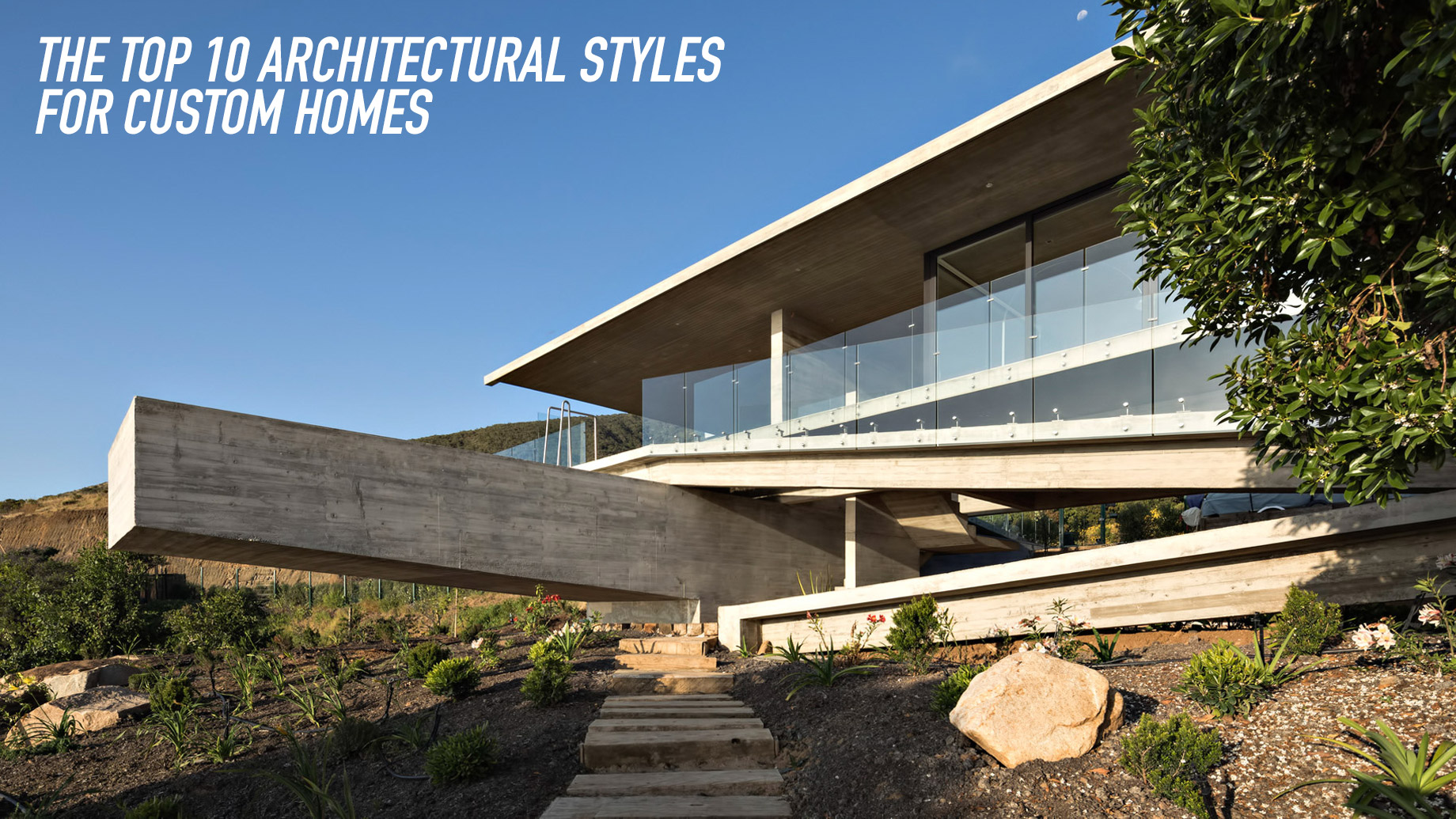
Building a custom home gives you absolute freedom to pick whichever architectural style you love.
Across the US, there are countless regional styles, from traditional to ultra-modern.
There are a few things to consider when choosing a style for your home. Building styles in your neighborhood. The landscape around your plot. Local weather. And, most importantly, your own aesthetic preferences.
Best of all: Building a custom home in 2021 means you’ll get to enjoy modern conveniences, even in a traditional-style building. Think solar panels on a cottage roof, floor heating in a Victorian house, or an open-plan Colonial villa.
To give you some inspiration and get you started on your creative journey to designing your perfect custom home, here are the top 10 architectural styles to consider in 2021.
1. Cape Cod
Characteristics of Cape Cod style are steep, slanting roofs with cedar shingles, large chimneys, and shuttered windows flanking the front door. These homes usually have one or two floors and feature small but well-kept front yards lined by white picket fences.
The style evolved in 16th century New England, and was originally designed to withstand the Atlantic gales of the Massachusetts coastline. Cape Cod homes rose in popularity again during and after WWII. Today, they still enchant with their quaint, cozy charm.
2. French Country
In the US, the French Country style dates back to the 18th century, when France occupied large areas in the East, from the Great Lakes to Mississippi.
French Country homes are usually single-story. Typically, they feature a half-timbered frame, stucco walls, many narrow windows lined by paired shutters, and steeply pitched, side-gabled roofs. The exterior is asymmetrical and ornate, often reflected in stunning driveways and landscaped yards.
3. Colonial
Colonial style has its origins in the 17th century. Since settlers incorporated typical elements of their country of origin, there are countless variations – from Spanish to German Colonial.
What Colonial homes usually have in common are symmetrical, rectangular base shapes, gambrel or barn roofs, and large, square rooms. Materials typically include a lot of woodwork, brick, and stone. Dentil molding is a widespread exterior accent.
Colonial homes usually stretch across two stories – family rooms on the first floor, and bedrooms on the second.
4. Victorian
This style developed during the reign of Queen Victoria in the 19th century. It is common in historic US cities like San Francisco, Philadelphia, and Boston.
Victorian homes are incredibly detailed, with complex designs, asymmetrical shapes, and ornate gable trim. They often feature corbels, bright exterior paint, turrets, decorative railing, and sweeping porches.
5. Greek Revival
Greek Revival style homes are typical for the South. They flourished during the first half of the 19th century and are marked by bright white, temple-like fronts.
Their defining characteristics are pantheon-like Greek columns and gables. Columns are either fluted or smooth, square or round, Doric or Corinthian.
6. (Contemporary) Craftsman
If you’re a DIY fan, a Craftsman-style home may be the right choice for you. As the name suggests, this style emerged from the Arts and Crafts Movement.
Typically, these homes feature natural building materials like wood, stone, and brick. Other characteristics include wide wrap-around porches, low-pitched gabled roofs, open floor plans, big fireplaces, and large exposed roof rafters.
7. Cottage
Cottagecore has become the defining aesthetic of 2020. If you’re one of the many charmed by the idea of a cozy, idyllic, simple home, Cottage style may be for you. With origins in medieval English architecture, it became popular in the US in the 1920s.
Common features include steeply pitched roofs, cross gables, arched doors, brick, stone, or stucco siding, and casement windows with small panes. Overall, this gives these homes a snug, warm, storybook character.
8. Mediterranean
Low-pitched red tile roofs, grillwork, arches, wrought-iron windows and balconies, stucco exteriors, and bright tiling characterize Mediterranean-style homes. They are typically U-shaped, with a central courtyard.
This style draws inspiration from various Mediterranean cultures – from the Italian Renaissance to 19th-century Spain. It is particularly popular in Southern California.
9. Transitional
Transitional home styles blend classic and contemporary elements. Traditional columns and Victorian ceilings merge with industrial elements, like steel-beam columns and metal sidings.
Generally, these homes are rich in textural elements but sparsely ornamented.
10. Modern
The Modern architectural style, finally, gained traction after World War II. It is defined by stylistic simplicity, sharp angles, and a lack of ornamentation. Industrial materials, especially steel, feature prominently. Energy efficiency, sustainability, and natural light are priorities.
If you’re enamored with shiny metal constructions, clean lines, bold windows and daring terraces, this style is for you.
Conclusion
Building a custom home in 2021 gives you total flexibility when it comes to picking an architectural style.
Gathering inspiration, looking at examples, and comparing what fits best into your neighborhood will give you a great start. Ultimately, though, you should base your decision what look you like best.